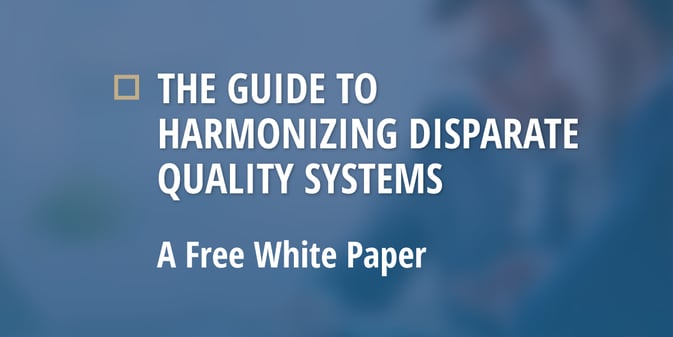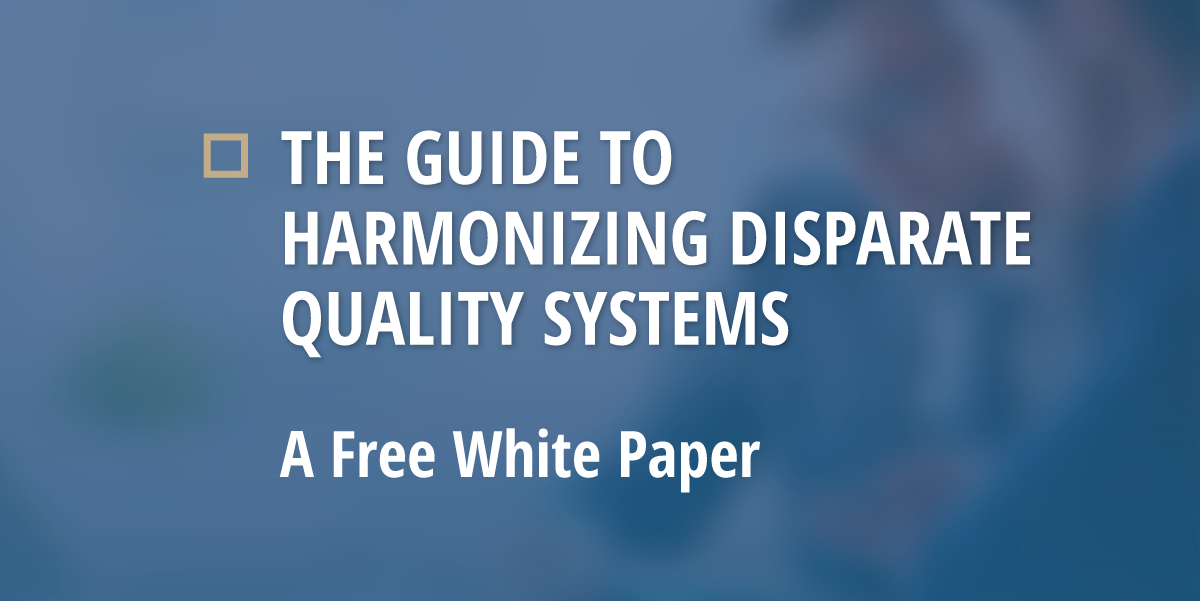 In 2015 and 2016, there were over 150 major medical device company acquisitions and mergers, and that trend has only accelerated in 2017. These events often bring important questions regarding quality that can have far-reaching consequences if not addressed thoroughly by both department and company leadership.
In 2015 and 2016, there were over 150 major medical device company acquisitions and mergers, and that trend has only accelerated in 2017. These events often bring important questions regarding quality that can have far-reaching consequences if not addressed thoroughly by both department and company leadership.
We've compiled insights from experts with firsthand experience helping device manufacturers make informed decisions when integrating quality systems and performing the due diligence necessary to ensure compliance in both the short and long term.
Download the free white paper.
See an excerpt below.
From page 9 of Harmonizing Disparate Quality Systems:
A Focus on Gap Analysis
What to Look For and How to Avoid Common Problems
“The decision to leave a company with their own quality system or not is born largely from the success they’ve seen from it and the need for full integration. Companies need to weigh these decisions carefully. A lot is riding on the thoroughness of the gap analysis.” - Rich Wynkoop
As we’ve seen, the importance of a thorough initial gap analysis cannot be understated and there are a few key areas to pay close attention to ensure a complete evaluation.
Medical Device Reporting (MDR): Complaints are a particular common area of concern when absorbing another organization’s quality system. Since MDR thresholds vary between companies, it’s important not to assume anything when determining if an incoming company has been reporting the MDRs they’ve been recording. Equally important is ensuring the company has not only defined a risk management system, but has adequately applied it to their complaint analysis.
Corrective and Preventive Action (CAPA): It’s not uncommon for companies to line up too many or too few CAPAs, both of which present problems. Too low of a threshold can turn into an endless list of remedial tasks. Too high of a threshold can allow compliance problems to go undetected, quietly growing into significant issues. Here too, it’s important to ensure the risk management system is appropriately folded into the CAPA.
Those two systems, MDR and CAPA, should then be integrated into management review to confirm everyone is aware that these processes have been defined before evaluating the efficiencies of the system.
This review should also examine the organization’s audits, using these to aid review in two important ways:
1. Understanding the level of attention being given to the quality system, and
2. Knowing what problems have been discovered, how and when they were fixed, and whether or not these remedies were certified to be effective.



